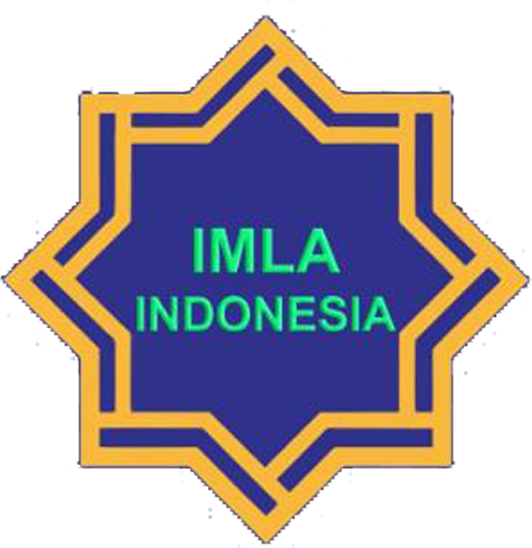The Bridging Language between Diglossia of Classical and Colloquial Arabic/ اللغة التجسيرية بين ازدواجية الفصحى والعامية
Abstract
استهدف البحث الحالي تحديد أسباب الازدواجية، مثل: الأمية، وحصر القراءة والكتابة على النخبة، وتشكيل نمط لغوي يمثل الاستقلال والسيادة، وكذلك حصر أهم مشكلات الازدواجية، مثل: ضياع الهوية، وانقراض الفصحى، والتفكك الاجتماعي؛ مما كان سببا في ضرورة إيجاد لغة تجسيرية تقرب الفجوة بين: العامية، والفصحى، مع تحديد ملامح هذه اللغة التجسيرية، وآليات بناء المناهج وإعداد المواد التعليمية واللغوية في ضوء نموذج رباعي للغة التجسيرية اقترحه البحث الحالي؛ بما يساعد على بناء مناهج للغة العربية تقرب بين: العامية، والفصحى، ومن أهم نتائج الدراسة الحالية: أن اللغة التجسيرية تساعد على سهولة تعلم اللغة العربية وعدم شعور المتعلم بالغربة والانفصام اللغوي، كما توصلت الدراسة إلى إمكانية وضع تصور مقترح لبناء مناهج اللغة العربية في ضوء معطيات لغة تجسيرية شائعة ومألوفة على الآذان تسد الفجوة ما بين العامية والفصحى.
The current research aims at identifying the causes of diglossia, such as: illiteracy, limited reading culture and writing for the elite, and forming a language pattern that represents independence and sovereignty. In addition, this research identifies the primary issues of this bridging language, and to find linguistic and social mechanisms for diglossia, such as: loss of identity, classical language extinction, and social disintegration; which leads to generate a bridging language, which closes the gap between: colloquial and classical Arabic, to highlight specific features of building and preparing educational curricula and linguistic materials In the paradigm of a quadruple model flow of the bridging language proposed by this research; to help approximate between classical and colloquial Arabic. Among the most important results of this study: that the bridging language helps to learn, reinforce linguistic and communication retainment and prevent the Arabic language deterioration, The Bridging language evades learner and user sense of alienation, and linguistic schizophrenia. The study also finds the possibility of developing a proposed concept for building Arabic language curricula in light of common and familiar bridging language data which is common and familiar that bridges the gap between colloquial and classical Arabic.
Keywords
Full Text:
PDF (العربية)References
إبراهيم كايد، العربية الفصحى بين الازدواجية اللغوية والثنائية اللغوية، المجلة العلمية لجامعة الملك فيصل "العلوم الإنسانية والإدارية”، المجلد الثالث، العدد الأول، 2002م، ص 68 .
زين الدين بن موسى: أنماط الصراع بين اللغة العربية والعاميات المعاصرة: العامية الجزائرية نموذجا، مجلة جامعة منتوري. قسنطينة –الجزائر، كلية الآداب، عدد 11 ،.2010.
عباس المصري وعماد أبو حسن، الازدواجية اللغوية في اللغة العربية، المجمع، العدد 8، 2014 2014المجمع، العدد 8 ، 2014.
عبد الرحمن القعود، الإزدواج اللغوي في اللغة العربية، ومقالتان مترجمتان إحداهما: أثر اللغة العربية على نفسية العرب لشوبي والأخرى “الازدواج اللغوي لفرغيسون، مكتبة الملك فهد الوطنية، الرياض، ط1، 1997م، ص 48- 49، في:
فلوريان كولماس: اللغة والاقتصاد، مجلة عالم المعرفة، العدد 263، 2000.
محمد راجي الزغول: ازدواجية اللغة، نظرة في حاضر اللغة العربية وتطلع نحو مستقبلها في ضوء الدراسات اللغوية، مجلة مجمع اللغة العربية الأردني "السنة الثالثة"، العدد المزدوج 8 ،1980.
موقع مقالات إسلم ويب، مقال بعنوان:" الازدواجية اللغوية والمرض الثقافي”، على الرابط الالكتروني: https://www.islamweb.net/media/print.php?id=92521&id=92521
فاضل، عهد، 2018. لماذا يعاني البعض صعوبة تعلّم النحو في اللغة العربية؟ www.alarabiya.net/ar/last-page/2018/12/29/لماذا-يعاني-البعض-صعوبة-تعلّم-النحو-في-اللغة-العربية؟
قنطرة. 2019. اللغة العربية في المركز الرابع عالميا كلغة أم وثاني أكثر لغة انتشارا في العالم. https://ar.qantara.de/node/38312
أراجيك (2015). اللغة العربية …لهذه الأسباب صنّفت ضمن أصعب لغات العالم !. https://www.arageek.com/2015/07/29/why-does-arabic-one-of-the-most-diffcult-languages-to-learn.html
Alshamrani , Hassan. (2012). Diglossia in Arabic TV stations. Journal of King Saud University- Languages and Translation. (24). PP. 57- 69.
Shouby, Eli (1951),“The influence of the Arabic Language on Psychology of the Arabs”, Middle East(11)Journal.
https://www.merriam-webster.com/dictionary/lingua%20franca
https://dictionary.cambridge.org/dictionary/english/lingua-franca
https://www.oxfordlearnersdictionaries.com/definition/english/lingua-franca
DOI: http://dx.doi.org/10.17977/um056v4i2p130-162
Refbacks
- There are currently no refbacks.
Copyright (c) 2020 Hedaya Hedaya El-Sheikh Ali, Ameerah M.A Younes Dana

This work is licensed under a Creative Commons Attribution-NonCommercial 4.0 International License.
AL-ARABI is indexed by:
Editorial Office:
Al-Arabi: Journal of Teaching Arabic as a Foreign Language
Arabic Department, Faculty of Letters, Universitas Negeri Malang (UM)
Jalan Semarang 5, Malang 65145, Indonesia.
Telephone: (0341) 551312 Ext. 239. Fax (0341) 567475.
E-mail: alarabi@um.ac.id

Al-Arabi: Journal of Teaching Arabic as a Foreign Language is licensed under a Creative Commons Attribution 4.0 International License.
Based on a work at http://journal2.um.ac.id/index.php/alarabi/










